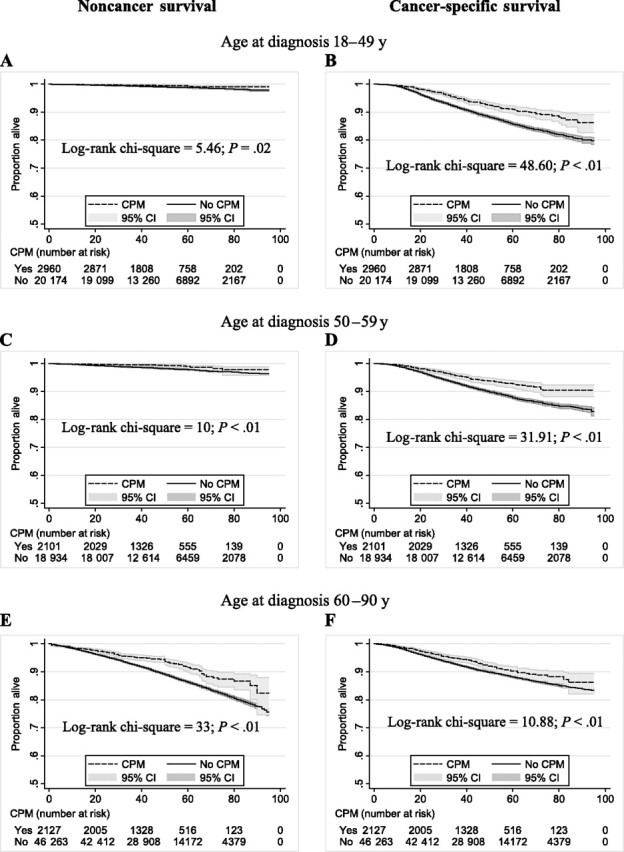Figure 1.

Noncancer and cancer-specific survival for contralateral prophylactic mastectomy (CPM) vs no CPM by age at diagnosis. A) Noncancer survival associated with CPM among women aged 18–49 years at time of breast cancer diagnosis (hazard ratio [HR] for death = 0.62, 95% confidence interval [CI] = 0.36 to 1.06; P = .09). B) Cancer-specific survival associated with CPM among women aged 18–49 years at time of breast cancer diagnosis (HR for death = 0.84, 95% CI = 0.72 to 0.97; P = .02). C) Noncancer survival associated with CPM among women aged 50–59 years at time of breast cancer diagnosis (HR for death = 0.53, 95% CI = 0.32 to 0.87; P = .01). D) Cancer-specific survival associated with CPM among women aged 50–59 years at time of breast cancer diagnosis (HR for death = 0.79, 95% CI = 0.66 to 0.95; P = .01). E) Noncancer survival associated with CPM among women aged 60–90 years at time of breast cancer diagnosis (HR for death = 0.63, 95% CI = 0.53 to 0.74; P < .001). F) Cancer-specific survival associated with CPM among women aged 60–90 years at time of breast cancer diagnosis (HR for death = 0.88, 95% CI = 0.75 to 1.03; P = .13). The scale for x-axis is time after diagnosis in months. Adjusted for age, race, tumor stage, number of positive lymph nodes, tumor grade, tumor histology, and first tumor indicator in Cox regression model. All P values are two-sided and were calculated using the log-rank test.
